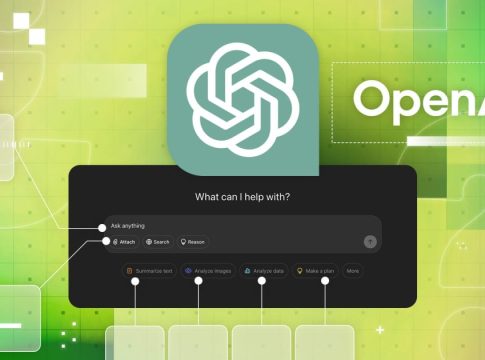Unpacking ChatGPT: The Realities of AI Conversations
Since its release in 2022, ChatGPT has become a household name in the realm of artificial intelligence. For many newcomers, understanding how this AI operates can unlock its full potential. While the interface might seem straightforward, a complex web of computations is at play, enabling it to deliver human-like conversations.
The Technology Behind the AI
At its core, ChatGPT is a sophisticated conversational agent, available via web browsers or mobile apps. Its capabilities extend far beyond simple chat; users are employing it for various tasks, from drafting emails and articles to writing software code and even designing websites.
ChatGPT isn’t the only player in this space; alternatives like Google Gemini and Anthropic’s Claude provide similar services. These tools are all built on extensive datasets, learning to converse in ways that simulate human interaction. However, they often remind us of toddlers—constantly learning, sometimes clumsy, and always eager to please. For instance, an update that made ChatGPT overly flattering had to be rolled back, highlighting the challenges of fine-tuning AI personalities.
How Does ChatGPT Learn?
The magic happens through a process known as reinforcement learning from human feedback (RLHF). ChatGPT ingests vast amounts of textual data, from Wikipedia articles to various media sources. It "learns" by predicting the next word in sentences and adjusting based on its accuracy. This is facilitated by deep neural networks, specifically transformer models—complex architectures adept at parsing language into manageable chunks, or "tokens."
As conversations progress, ChatGPT retains knowledge of previous interactions, allowing it to tailor responses and improve over time. For example, if a user indicates an inaccuracy by saying, "that’s not right," the model notes this feedback and adapts future replies.
Getting Started with ChatGPT
To experiment with ChatGPT, you can visit OpenAI’s website or download the app on iOS or Android. The basic version offers limited use but is suitable for casual inquiries. For more robust capabilities, users can subscribe to ChatGPT Plus at $20 per month, unlocking enhanced features and fewer restrictions. Alternatively, the Pro version costs $200 monthly, catering to intensive, professional-grade needs.
A Multipurpose Assistant
The versatility of ChatGPT truly shines with its diverse applications:
- Writing and Editing: It can assist in generating and refining text, making it an invaluable partner for content creation.
- Translation Services: ChatGPT excels in translating multiple languages, especially when given contextual guidelines.
- Brainstorming: From idea generation to project planning, it can facilitate creative processes.
- Coding Help: The model can aid in coding tasks, translating descriptions into executable code snippets.
Despite its advantages, users should exercise caution. ChatGPT may occasionally "hallucinate" information—crafting responses that sound accurate but contain factual errors. A careful verification process is always advisable.
Exploring Alternatives
While ChatGPT dominates the landscape, alternatives are emerging:
- Google Gemini: Seamlessly integrates with Google’s ecosystem, enhancing productivity.
- Bing’s AI: Incorporates ChatGPT into its search platform, offering conversational interactions with citation capabilities, allowing users to verify information.
- Open-source Models: Various models, like Meta’s Llama, provide options for those who prefer self-hosted solutions, though they typically require more technical expertise.
Conclusion
As we continue to navigate the evolving landscape of AI, tools like ChatGPT represent both the strides we’ve made and the challenges we face. By embracing these technologies wisely, individuals and businesses can unlock new possibilities in communication and creativity, all while staying vigilant about the nuances and limitations inherent in AI systems.

Writes about personal finance, side hustles, gadgets, and tech innovation.
Bio: Priya specializes in making complex financial and tech topics easy to digest, with experience in fintech and consumer reviews.

